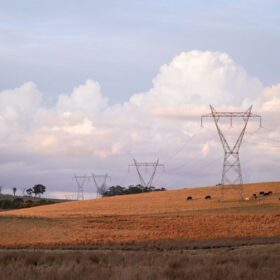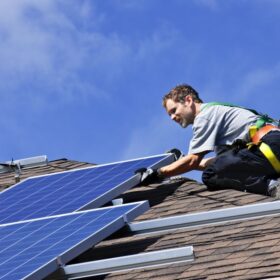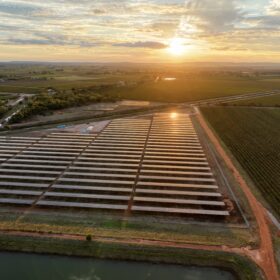The operator RAA has today unveiled locations for the first 12 fast-charging locations for the electric vehicle (EV) network, which has been supported by a $12.34 million state government grant.
The RAA Charge network will be made up of 86 AC fast-charging stations (capable of up to 7 kW output), and 54 DC Rapid (up to 150 kW) and Ultra-Rapid (up to 200 kW) charging stations in metropolitan, regional and rural locations.
The first sites include Marion, West Lakes, Strathalbyn, Hahndorf, Woodside, Mount Gambier and five Adelaide CBD UParks.
Construction of all 140 charging sites is expected to be completed by the end of next year, with all powered by renewable energy.
With the convenience of multiple high powered charging stations across the state, driving range anxiety will no longer be a barrier to electric vehicle purchase.
By encouraging use when cheap renewable supply is plentiful, the new network will also contribute significantly to the stability and efficiency of our electricity system, helping place downward pressure on power prices for all South Australians.
The statewide EV charging network sends a clear message to global vehicle manufacturers, business and the community that South Australia is intent on leading the transition to electric vehicles in Australia.
The operator RAA has today unveiled locations for the first 12 fast charging locations for the network, which has been supported by a $12.34 million State Government grant.
The RAA Charge network will be made up of 86 AC fast charging stations (capable of up to 7 kW output), and 54 DC Rapid (up to 150 kW) and Ultra-Rapid (up to 200 kW) charging stations in metropolitan, regional and rural locations.
The first sites include Marion, West Lakes, Strathalbyn, Hahndorf, Woodside, Mount Gambier and five Adelaide CBD UParks.
Construction of all 140 charging sites is expected to be completed by the end of next year, with all powered by renewable energy.
With the convenience of multiple high powered charging stations across the state, driving range anxiety will no longer be a barrier to electric vehicle purchase.
By encouraging use when cheap renewable supply is plentiful, the new network will also contribute significantly to the stability and efficiency of our electricity system, helping place downward pressure on power prices for all South Australians.
SA Premier Peter Malinauskas said the statewide EV charging network sends a clear message to global vehicle manufacturers, business and the community that South Australia is intent on leading the transition to electric vehicles in Australia.
“South Australia leads the world in decarbonisation of our electricity grid, and supporting a faster uptake of electric vehicles makes sense from an economic and an environmental standpoint,” he said.
“At a time when petrol prices are stubbornly high, South Australia has abundant renewable energy, particularly in the middle of the day. Electric vehicles will play a crucial role in storing that energy and using it productively.
“By helping fund this broad-scale charging network, we’ll ensure we continue to lead the nation.”
The previously proposed EV tax has been repealed to provide certainty of cost for electric vehicle drivers, as well as supporting the uptake of electric vehicles by preserving the financial benefits for EV adopters considering the average annual savings on fuel and maintenance costs.
South Australia a has seen an increase in new EV sales in the month of January – with 242 electric vehicles sold, up from just 32 in the same month in 2022.
Significant incentives for the purchases of new battery electric and hydrogen fuel cell vehicles are in place, including a three-year exemption on motor registration fees, and a $3,000 subsidy (capped at a vehicle price of $68,750 incl. GST).
The previously proposed electric vehicle tax has been repealed to provide certainty of cost for electric vehicle drivers, as well as supporting the uptake of electric vehicles by preserving the financial benefits for EV adopters considering the average annual savings on fuel and maintenance costs.






By submitting this form you agree to pv magazine using your data for the purposes of publishing your comment.
Your personal data will only be disclosed or otherwise transmitted to third parties for the purposes of spam filtering or if this is necessary for technical maintenance of the website. Any other transfer to third parties will not take place unless this is justified on the basis of applicable data protection regulations or if pv magazine is legally obliged to do so.
You may revoke this consent at any time with effect for the future, in which case your personal data will be deleted immediately. Otherwise, your data will be deleted if pv magazine has processed your request or the purpose of data storage is fulfilled.
Further information on data privacy can be found in our Data Protection Policy.